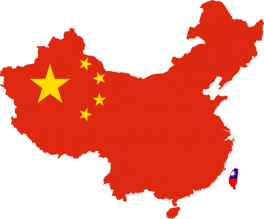POE Investors: Travelling a Thousand Miles in one Day

SYDNEY: 10 March 2014 - Andrew Lumsden and Lizzie Knight of Corrs show that POE investors represent a dynamic force in cross border M&A. With access to capital reduced regulatory barriers to investment, in this the year of the horse, 2014 looks set to be a year for swift victories by Chinese POEs in a wider range of sectors.
Chinese Privately Owned Enterprises (POEs) are a vibrant element of the Chinese economy. Currently, there are 50 million POEs in China, contributing to 60% of the country’s GDP, 50% of tax revenue and creating some 80% of jobs. Consistent with their place in China’s economy, POEs now account for a larger proportion of Chinese outbound investment with four of China’s top ten outbound deals in 2013 having been made by POEs. Indeed, all of the public deals by Chinese bidders in Australia in 2013 involved POEs (see Corrs M&A Review 2013).
POEs are a relatively new phenomenon in China with private business owners denied party membership until 2002. It was not until March 2004 that private asset and capital ownership was recognised formally in the PRC Constitution. POEs have traditionally had to operate in a restricted business environment, importantly, with limited access to capital and interference from local regulatory authorities (see Chinese investment – a new bolder approach). The Third Plenum in November 2013 made clear the PRC Government’s recognition of the role of POEs in both the domestic economy and on the international stage, with the announcement of a number of new policy initiatives to support POE access to capital and reduce regulatory barriers to outbound investment (see The Third Plenum - a Reform Manifesto).
POEs have previously faced limited access to capital from a lending landscape dominated by State Owned Banks. Consistent with the Third Plenum Decision that private financiers will be permitted to establish local banks, on 1 March 2014 China legalised private lending in the pilot city of Wenzhou. The Wenzhou Private Financing Regulation, now permits enterprises to borrow outside the State Owned Bank framework from private capital management firms, financing information service firms and lending service institutions. This development, coupled with interest rate liberalisation, will enable POEs to borrow from a wider range of sources at competitive borrowing rates.
The Third Plenum Decision also highlighted the proposed modernisation of the country’s IPO share-offering system, moving away from the existing approval based regime to a registration based one. Under the current approval based system, the dominant role played by regulators in reviewing and approving IPO applications has tended to have the effect that listing opportunities have been allocated to candidates largely on the basis of political considerations.
In late December 2013, the China Securities Regulatory Commission (CSRC) announced the re-opening of IPOs on the Shenzhen and Shanghai Stock Exchanges. With some 80-160 companies queued to list on these exchanges, half of which were POEs, it was anticipated this move would further support POE access to local capital. Since the re-opening of the local IPOs in January some 48 companies have been listed in the China mainland. However, as result of dramatic rises in the share prices (some 50%) and concern about market volatility, on 28 February the CSRC announced a suspension to IPO applications. It is anticipated that new share listings will open again in late March, and the CSRC has confirmed its commitment to an open, transparent and stable market. The developments in this area will be of fundamental importance to POEs keen to access local capital and engage in outbound investment.
Recognising regulatory barriers to outbound investment by POEs, the PRC Government announced a new policy liberalising the PRC regulatory approval process (click here for an outline of the current approval process). To date the PRC regulatory approval process has been complex, involving a mixture of commercial and political considerations, and one which has been difficult for POEs to navigate, with limited relationships with PRC regulatory agencies (see First you get the money). The thrust of the new policy is to grant greater approval power to the provincial development reform authorities and to establish an overseas investment management mechanism which is based on a filing system, as distinct from the current approval system.
While implementing regulations to support the policy are yet to be promulgated, we understand (based on our discussions with POEs in China) that a number of provincial regulatory agencies are acting in accordance with the policy. For example, the Sichuan Provincial Development and Reform Commission has indicated it will no longer require the completion of feasibility studies by POEs for outbound investment proposals. The removal of a requirement to lodge a feasibility study, along with the increase in thresholds for which approvals are required, will significantly reduce the time for a POE to complete a transaction and is likely to make for a more nimble class of POE acquirers.
Reflecting the historical development of POEs by Chinese entrepreneurs, decision making by POEs is relatively quick and transparent and focused on market growth opportunities to drive profits. As a result, contrary to Australian perceptions about Chinese investment, the POE sector has to date demonstrated a dynamic approach to opportunity identification beyond security of supply of energy and resources. While public deals involving POEs in 2013 continued to focus on the resources sector (see Corrs M&A Review 2013), more generally 2013 saw increased POE investment in Australia in a broader range of sectors, with a particular focus on real estate and tourism (see China Trends in M&A).
Australia is not the only attractive destination for Chinese capital. Understanding the increasingly sophisticated forms of Chinese investment vehicles is vital to realising the opportunities offered by Chinese investment. With POE outbound investment in a wide variety of sectors set to continue to rise, Australian companies must ensure they are in a position to reap the benefits of this emerging force in cross border M&A.


Add new comment